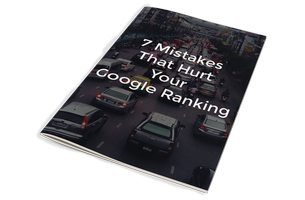
Sep
20
2018
Say more with fewer words
Writing for the web isn’t the writing we’re traditionally taught in school. Teachers inadvertently taught us how to fill pages rather than how to pack a punch with words.
When you’re writing for an online audience, every word counts. People skim rather than read thoroughly and skip long blocks of text entirely.
As an example:
"A book is made from a tree. It is an assemblage of flat, flexible parts (still called "leaves") imprinted with dark pigmented squiggles. One glance at it and you hear the voice of another person, perhaps someone dead for thousands of years. Across the millennia, the author is speaking, clearly and silently, inside your head, directly to you. Writing is perhaps the greatest of human inventions, binding together people, citizens of distant epochs, who never knew one another. Books break the shackles of time--proof that humans can work magic."
― Carl Sagan
Great quote, right? Did you read it all the way through?
Let’s edit it for the web:
A book is an assemblage of flat, flexible parts imprinted with squiggles. One glance and you hear the voice of another person. Across time and space, the author is speaking directly to you. Writing binds people together. Books break the shackles of time.
The edit conveys the same point, in less words. The original is 89 words. The edit has 43. Ask yourself, do I need this word to make my point?
Destroy filler words
People use filler words in their writing, but none more consistently than very.
If you feel like very is crucial to your sentence, what you need is a better word.
Is the thing you’re describing VERY BIG? Try huge, or gargantuan, or colossal. Is something VERY IMPORTANT? How about imperative, critical, or vital?
Google is a great resource. Simply type the word you want to describe as very and then synonyms. Google will give you a plethora of words to use in its place.
Choose the simplest word or phrase, and remove any that don’t add value.
For example, when I first wrote that last sentence it said “Always choose the simplest word or phrase, and remove any words that don’t add value to your point.”
Actions speak loudest
Keep your sentences concise by using active verbs. When we’re writing non-fiction, we’re tempted to hedge our bets, to avoid offending.
When we hedge, we often use passive voice. We’ll say: “It’s generally accepted that…” instead of “Experts agree…”
Even when you’re unsure, use active verbs. Be assertive. You’ll keep your sentences short, punchy, and readable. As an added bonus, you’ll lend authority to your writing.
I like to use the Hemingway Editor to pinpoint and eliminate passive voice. It also highlights sentences that are long and confusing.
Engage your audience
Pull your readers in by including them in the story. Even in non-fiction, you can include the reader by using personal pronouns.
By addressing your audience directly, you make them part of the story. Just like I’m doing now. You’re the writer I’m talking to.
Just you.
And we’re in this together.
Makes you feel sort of warm and fuzzy, doesn’t it?
Why white space matters
White space, regardless of the actual color, is the space that surrounds your words. It’s empty. Carving out these spaces around your writing makes it easier to read.
There’s a reason we jokingly refer to long paragraphs online as novels. A lot of them are well-written, compelling, and unread. Your readers are mostly skimming.
Space your writing out. The rules presented for how to do this are more like guidelines.
Generally, limit each paragraph to 2-4 sentences. Long sentences may even stand alone.
Reading online is the best way to learn this. Take note of the articles that pull you in and keep you reading. How much white space do they have?
